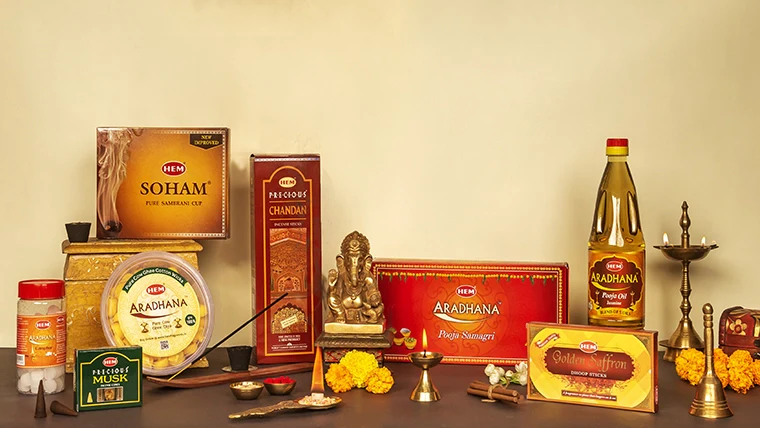The spiritual practice of Pooja, or worship, is central to many religious traditions, particularly Hinduism. It is a deeply personal and communal experience, often marked by rituals, offerings, and prayers. The effectiveness of a Pooja is significantly influenced by the Pooja Samagri, or worship essentials. This article aims to provide a comprehensive overview of the essential items needed for a complete worship experience, exploring their significance and use in various rituals. Whether you are a novice seeking to understand the basics or an experienced practitioner looking to refine your Pooja setup, this guide will equip you with the knowledge you need.
The Importance of Pooja Samagri
Pooja Samagri refers to the collection of items used in the worship of deities during religious rituals. The significance of these items extends beyond their physical presence; they are believed to embody spiritual energy and facilitate a connection with the divine. Each item has its own purpose and symbolism, contributing to the overall atmosphere of devotion and reverence. For instance, offerings like flowers and fruits symbolize purity and abundance, while incense represents the act of surrendering one’s ego. Understanding the role of each component enhances the worship experience, making it more meaningful and fulfilling.
Essential Components of Pooja Samagri
A proper Pooja setup typically includes several essential components. At the forefront are items such as a Pooja Thali, which serves as the main plate for offerings, and a Diya or oil lamp, symbolizing the dispelling of darkness and ignorance. The Thali is usually adorned with a variety of items including flowers, fruits, sweets, and grains, each chosen for its specific significance. Additionally, sacred symbols like a Swastika or Om may be incorporated to invoke auspiciousness. These items not only serve practical purposes but also enhance the visual appeal of the worship space, creating a sacred atmosphere conducive to meditation and prayer.
Incense and Its Role in Worship
One of the most important elements of Pooja Samagri is incense. Burning incense is a traditional practice that dates back thousands of years, believed to purify the surroundings and elevate the spiritual atmosphere. Different types of incense, such as sandalwood, jasmine, or rose, are used for their unique fragrances and properties. The act of lighting incense is often accompanied by a prayer or intention, further amplifying its spiritual significance. Research indicates that certain scents can influence mood and promote relaxation, making incense an essential aspect of the worship experience. The aromatic smoke rising during prayers symbolizes the devotees’ aspirations and prayers reaching the heavens.
Flowers and Their Symbolism
Flowers are another integral part of Pooja Samagri. They are often offered to deities as a symbol of devotion and purity. Each flower carries its own significance; for example, marigolds represent auspiciousness, while lotus flowers symbolize purity and enlightenment. Fresh flowers are preferred as they embody life and vitality, enhancing the overall energy of the Pooja. Beyond their aesthetic appeal, offering flowers is a way for devotees to express their love and gratitude towards the divine. In many cultures, the act of offering flowers is also seen as a gesture of surrender, signifying the relinquishment of ego and material attachments.
Food Offerings and Their Importance
Food offerings, or Naivedya, are an essential component of Pooja Samagri. They represent the devotee’s love and devotion, as well as a means of sharing blessings with the divine. Common offerings include fruits, sweets, and cooked dishes, which are selected based on the preferences of the deity being worshiped. The act of offering food is believed to invite the deity into the home and bless the household with prosperity and abundance. According to Hindu tradition, it is also customary to consume the offered food as Prasad, which is considered sacred and imbued with divine energy. This practice underscores the belief that the act of sharing food fosters community and connection.
Ritual Items: Bells, Conch Shells, and More
Various ritual items play a vital role in enhancing the Pooja experience. Bells, for instance, are often rung during rituals to invite the presence of deities and signify the start of prayers. The sound of the bell is believed to shatter negative energies and create a conducive atmosphere for worship. Similarly, conch shells, or Shankh, are blown to signal the commencement of rituals and to purify the space. Other items like a Kalash (sacred pot) filled with water and adorned with mango leaves may also be included, representing abundance and fertility. Each of these items serves a specific function and contributes to the overall sanctity of the worship experience.
Importance of Cleanliness and Purity
In Hindu tradition, cleanliness is paramount when performing Pooja. The worship area should be clean and organized, as it reflects the devotee’s respect for the divine. This extends to the items used in the Pooja Samagri—whether it’s the Pooja Thali, the Diya, or food offerings, all should be fresh and pure. Ritual purification often involves washing hands, feet, and face, as well as the items used in worship. This practice not only prepares the devotee physically but also mentally for the act of devotion. The emphasis on cleanliness underscores the belief that purity enhances the effectiveness of prayers and rituals, allowing for a deeper spiritual connection.
Creating a Personal Pooja Space
While traditional Pooja Samagri includes a standard set of items, personalizing your worship space can enhance your connection with the divine. Consider incorporating photographs or idols of your chosen deities, as well as meaningful symbols or artifacts that resonate with your spiritual journey. You may also choose to include items that reflect your cultural background or personal experiences. Creating a serene and inviting space for worship can transform your Pooja into a deeply personal and enriching experience. Remember, the essence of Pooja lies in devotion and intention, so feel free to adapt your setup to align with your spiritual beliefs and practices.
Conclusion: Embracing the Divine Through Pooja Samagri
Pooja Samagri is not merely a collection of items; it represents the heart and soul of the worship experience. Each component, from incense to flowers, plays a unique role in facilitating a connection with the divine. By understanding the significance of these essentials, devotees can enrich their spiritual practices and create a more meaningful worship experience. As you gather your Pooja Samagri, remember that the true essence of Pooja lies in the love, intention, and devotion you bring to the process. Embrace this sacred practice, and allow it to deepen your connection with the divine, fostering peace and harmony in your life.




